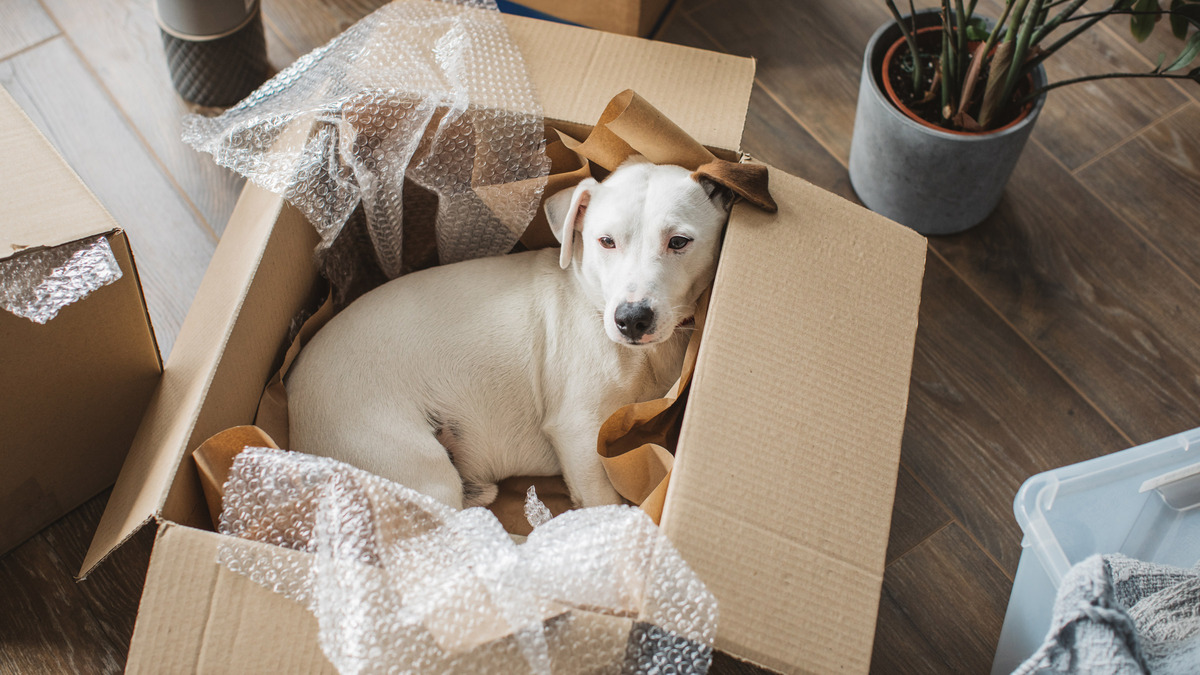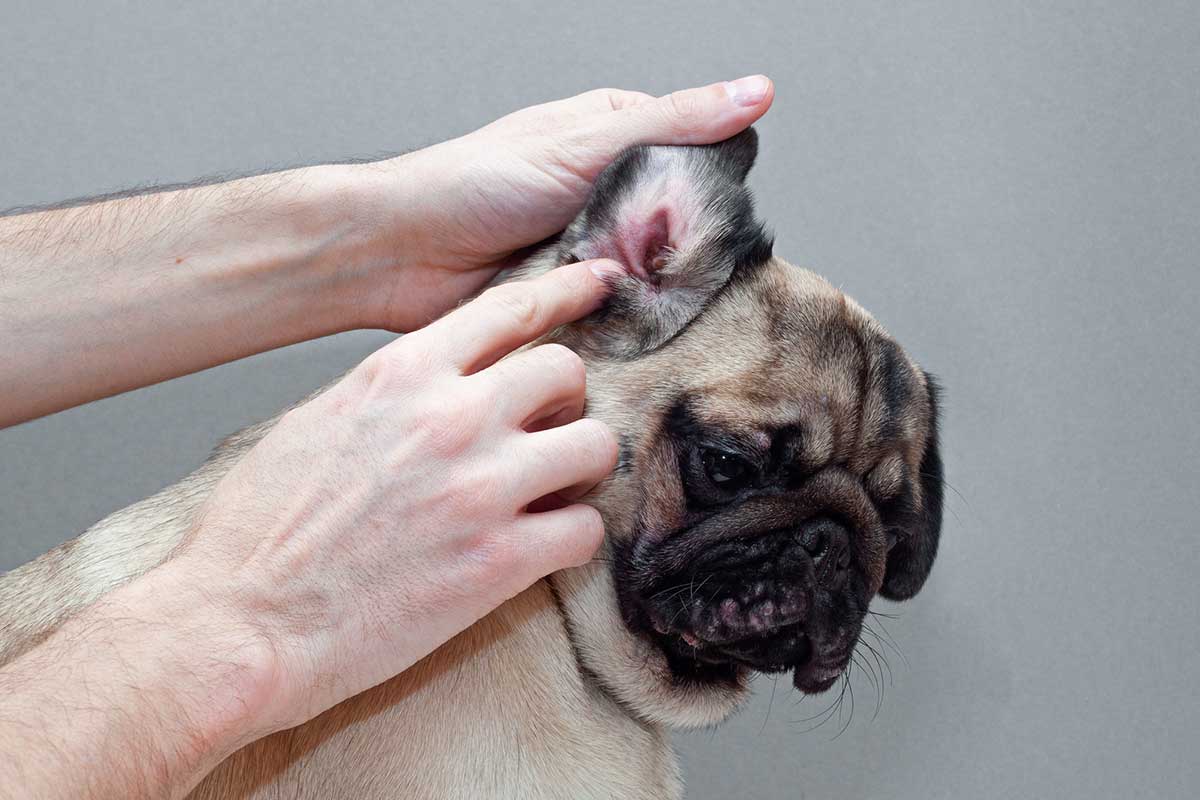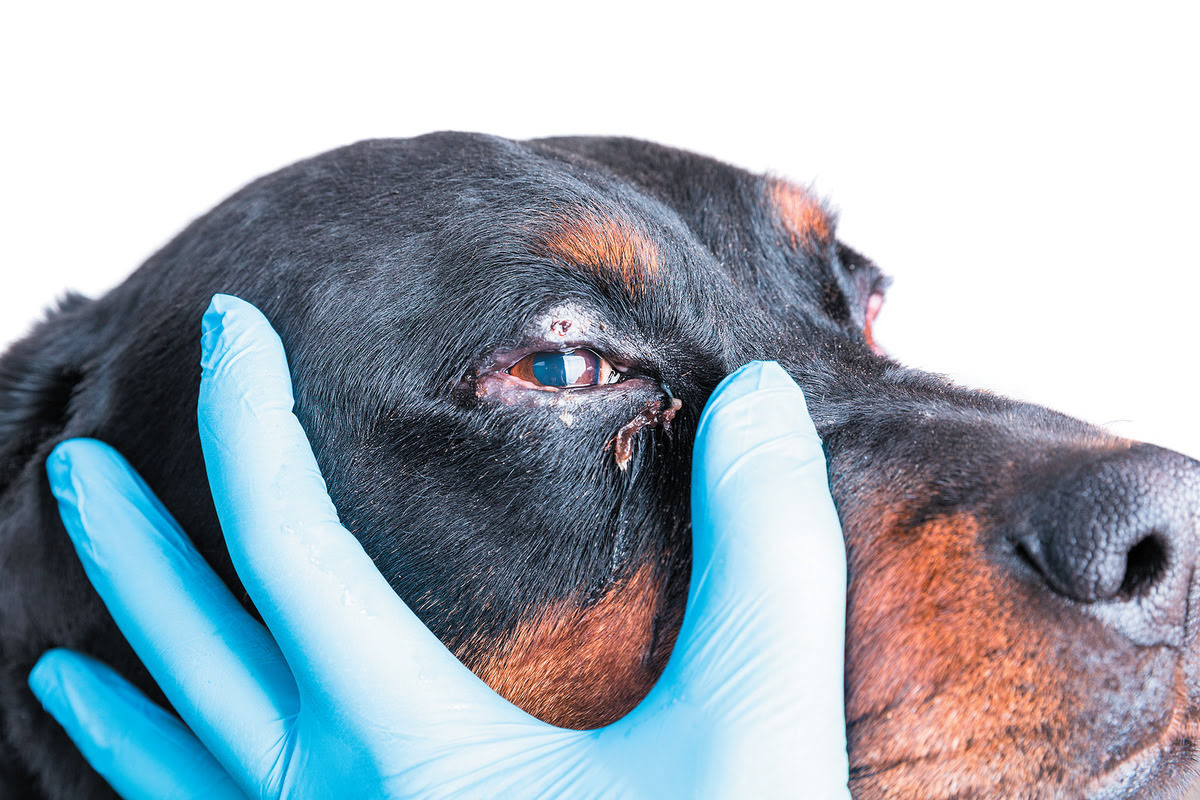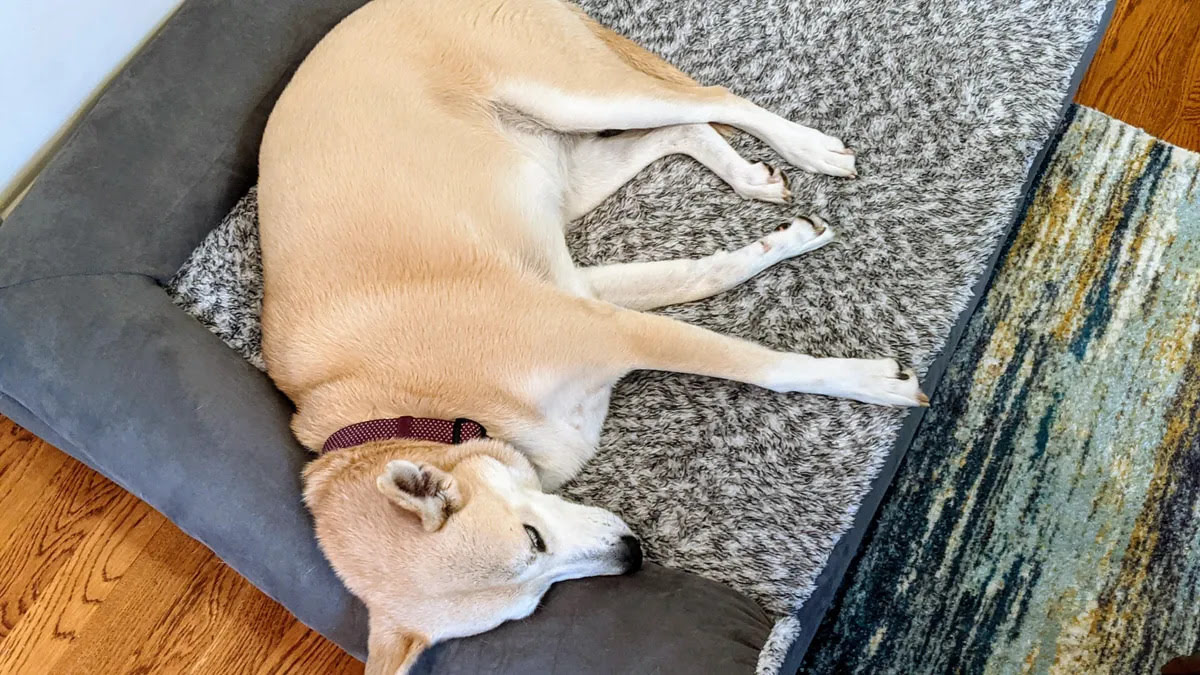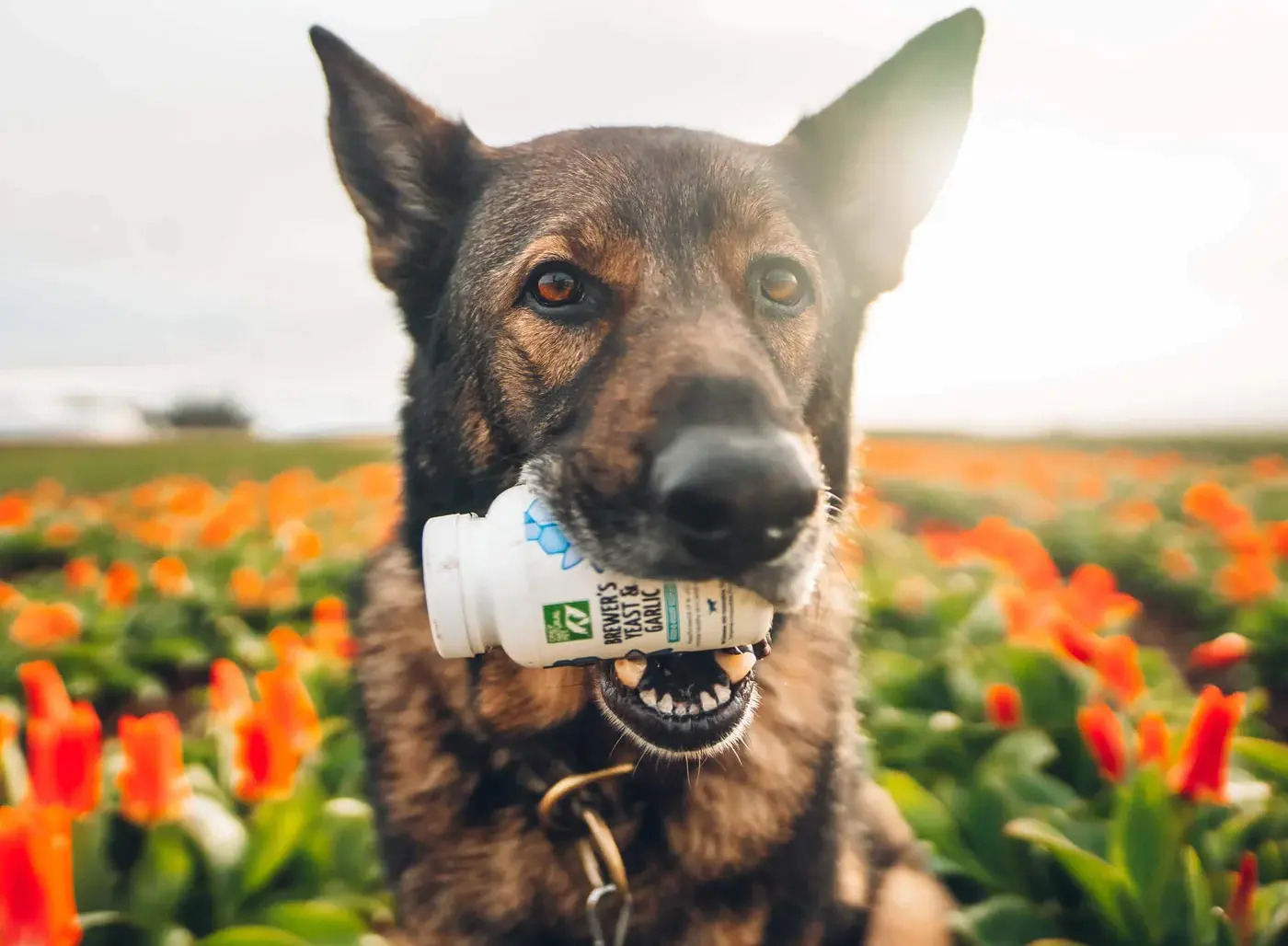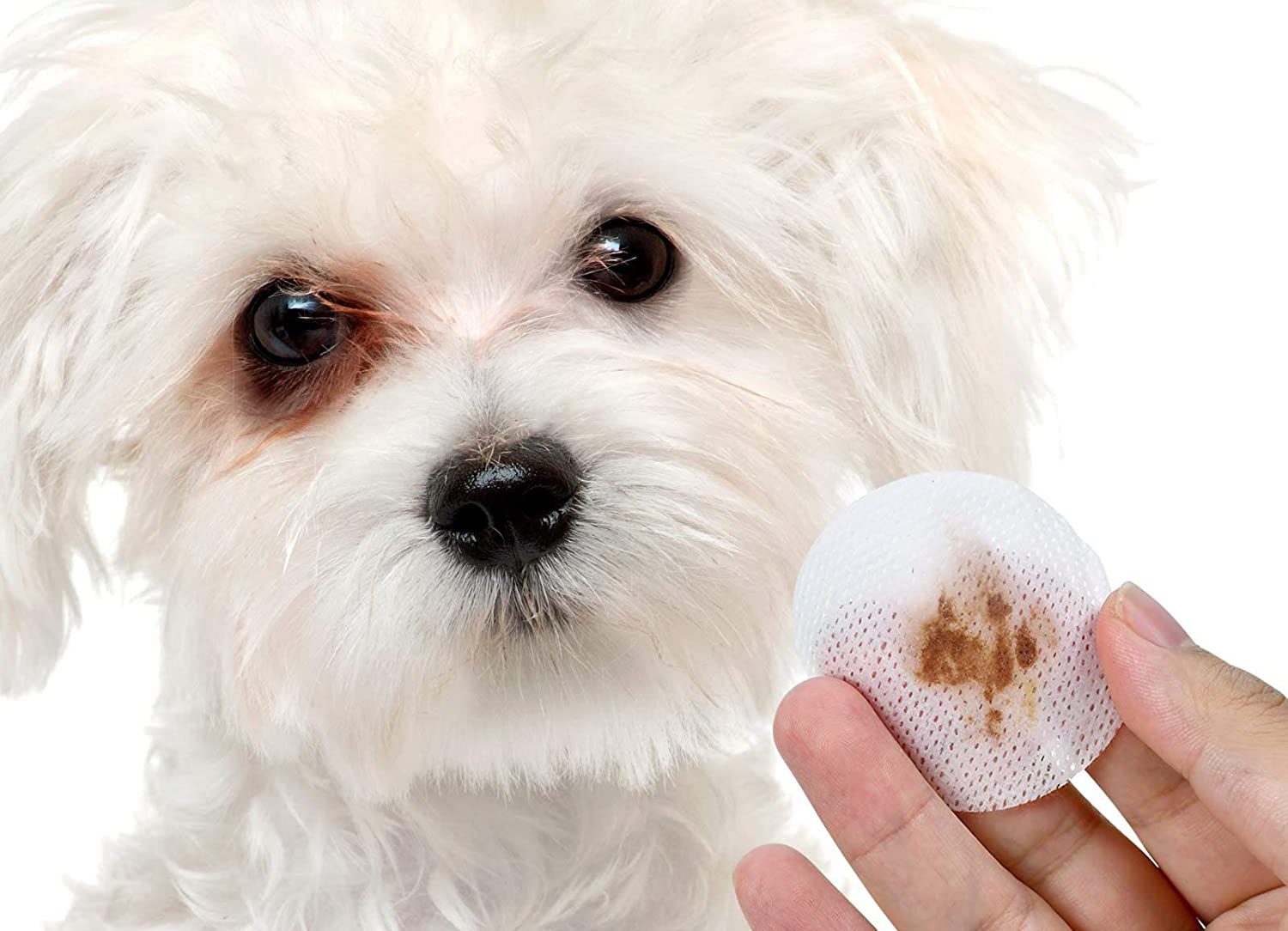Home>Health & Wellness>Common Health Issues>How To Get Rid Of Fleas In The Yard And On Dogs
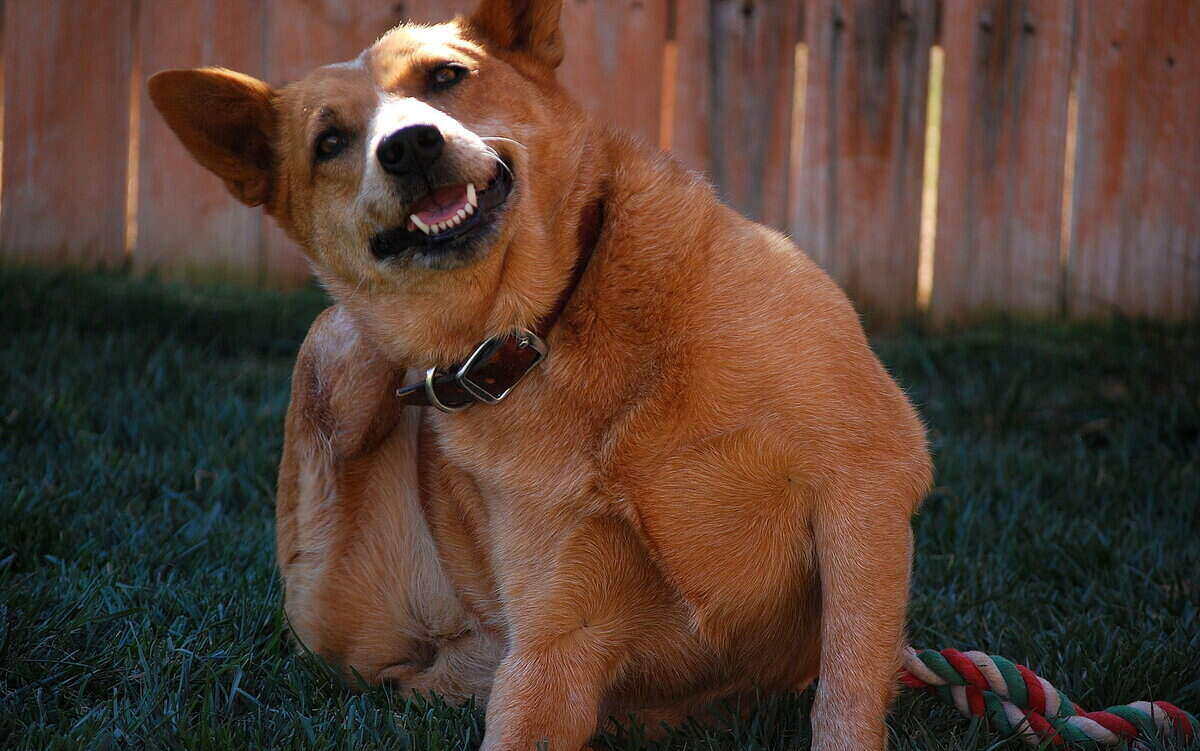

Common Health Issues
How To Get Rid Of Fleas In The Yard And On Dogs
Modified: February 21, 2024
Learn how to tackle common health issues like fleas in the yard and on dogs with our expert tips and solutions. Keep your pets and outdoor spaces healthy and flea-free!
(Many of the links in this article redirect to a specific reviewed product. Your purchase of these products through affiliate links helps to generate commission for Pawsomeoldies.com, at no extra cost. Learn more)
Table of Contents
- Introduction
- Understanding the flea life cycle
- Identifying flea infestations in the yard and on dogs
- Natural methods for getting rid of fleas in the yard
- Chemical methods for getting rid of fleas in the yard
- Natural methods for getting rid of fleas on dogs
- Chemical methods for getting rid of fleas on dogs
- Preventing future flea infestations in the yard and on dogs
- Conclusion
Introduction
Fleas are tiny, wingless parasites that survive by feeding on the blood of mammals and birds. These pesky insects can quickly infest both your yard and your furry companions, causing discomfort and potential health issues. Understanding how to effectively eliminate fleas from your yard and pets is crucial for maintaining a healthy and happy living environment.
In this comprehensive guide, we will explore the various methods for eradicating fleas from your yard and on your dogs. From natural remedies to chemical treatments, we will delve into the most effective strategies for combating flea infestations. Additionally, we will discuss preventative measures to help safeguard your yard and pets from future flea invasions.
By gaining a deeper understanding of the flea life cycle and learning to identify infestations, you can take proactive steps to address the issue. Whether you prefer natural or chemical solutions, this guide will equip you with the knowledge to make informed decisions and effectively rid your yard and pets of these troublesome pests.
Let's embark on this journey to create a flea-free environment for both your outdoor space and beloved canine companions. With the right approach and knowledge, you can successfully tackle flea infestations and ensure the well-being of your pets and the tranquility of your yard.
Understanding the flea life cycle
To effectively combat flea infestations in your yard and on your dogs, it's essential to comprehend the intricate life cycle of these resilient parasites. The flea life cycle consists of four stages: egg, larva, pupa, and adult. Understanding each stage is crucial for implementing targeted eradication methods.
Egg Stage
Flea eggs are typically laid on the host animal, but they can also be dispersed throughout the environment, including your yard. These tiny, white eggs are barely visible to the naked eye and can easily fall off your pet as they move around. Within a few days, the eggs hatch into larvae, initiating the next phase of the life cycle.
Larva Stage
Flea larvae are small, worm-like creatures that thrive in dark, humid environments, such as the shaded areas of your yard. They feed on organic debris and flea feces, avoiding direct sunlight. During this stage, larvae undergo multiple molts as they grow and develop, eventually spinning a cocoon and entering the pupa stage.
Pupa Stage
Inside their protective cocoons, flea pupae undergo metamorphosis, transitioning from larvae to adult fleas. This stage can last for several days to several months, depending on environmental conditions. Pupae are resilient and can remain dormant until favorable conditions prompt them to emerge as adult fleas.
Read more: How To Get Rid Of Fleas In A Dog Pen
Adult Stage
Once the adult flea emerges from its cocoon, it seeks a host to feed on. Without a blood meal, adult fleas cannot reproduce, but once they find a suitable host, they can begin laying eggs within 24 to 48 hours. This perpetuates the life cycle, leading to potential infestations in your yard and on your pets.
By understanding the flea life cycle, you can identify vulnerable points in the infestation process and target your efforts accordingly. Whether addressing eggs, larvae, pupae, or adult fleas, a comprehensive approach that considers each stage of the life cycle is essential for effective flea control.
Identifying flea infestations in the yard and on dogs
Identifying flea infestations in your yard and on your dogs is crucial for prompt intervention and effective eradication. By recognizing the signs of a flea infestation, you can take proactive measures to address the issue before it escalates. Here are the key indicators to look for:
Yard Infestations
-
Pet Scratching and Restlessness: Observing your pets scratching excessively or displaying restlessness while in the yard can be a telltale sign of flea infestation. Flea bites cause irritation and discomfort, prompting pets to scratch and exhibit signs of agitation.
-
Visible Fleas on Pets: While grooming your pets, closely inspect their fur for the presence of fleas. These tiny, agile insects can be challenging to spot, but careful examination may reveal their presence, especially around the neck, back, and tail areas.
-
Flea Dirt: Flea dirt, which resembles fine black pepper, may be noticeable on your pet's skin and fur. This excrement consists of digested blood and is a clear indication of flea activity.
-
Hot Spots in the Yard: Identify areas in your yard where your pets frequently rest or play. These spots may harbor flea eggs, larvae, or pupae, especially in shaded, moist areas such as under trees, bushes, or near outdoor furniture.
-
Scratching Patterns: Pay attention to your pet's scratching patterns. If they consistently scratch specific areas, it may indicate the presence of fleas or flea bites in those locations.
Dog Infestations
-
Visible Fleas and Flea Dirt: Inspect your dog's fur, particularly in areas where fleas tend to congregate, such as the base of the tail, abdomen, and groin. Look for live fleas and flea dirt, which may appear as dark specks on the skin.
-
Hair Loss and Redness: Flea infestations can lead to hair loss, redness, and skin irritation in dogs. Check for signs of dermatitis or allergic reactions caused by flea bites.
-
Excessive Scratching and Biting: Dogs may exhibit heightened scratching and biting behavior when infested with fleas. Persistent scratching, particularly in localized areas, can indicate the presence of fleas and the discomfort they cause.
-
Restlessness and Agitation: Infested dogs may display restlessness and agitation, often accompanied by frequent shaking of the head or body as they attempt to alleviate the discomfort caused by flea bites.
By recognizing these signs of flea infestations in your yard and on your dogs, you can promptly initiate targeted treatment and prevention strategies to eliminate fleas and ensure the well-being of your pets and the cleanliness of your outdoor space.
Read more: How To Get Rid Of Dog Fleas And Lice
Natural methods for getting rid of fleas in the yard
When it comes to combating flea infestations in your yard, natural methods offer effective and environmentally friendly solutions. These approaches not only target fleas but also help maintain a harmonious and chemical-free outdoor environment for your pets and family. Here are several natural methods for getting rid of fleas in your yard:
1. Diatomaceous Earth (DE)
Diatomaceous earth, a fine powder derived from fossilized algae, is a powerful natural flea deterrent. When sprinkled in areas where fleas are prevalent, such as shaded spots and outdoor resting areas for pets, DE effectively dehydrates and kills fleas upon contact. It is important to choose food-grade DE and apply it liberally in areas where fleas are likely to thrive.
2. Nematodes
Beneficial nematodes, microscopic roundworms, are natural predators of fleas and other pests. These tiny organisms can be applied to your yard using a sprayer or watering can. Once released into the soil, nematodes seek out flea larvae and pupae, effectively reducing the flea population without harming other beneficial organisms in the environment.
3. Herbal Repellents
Certain herbs and plants possess natural flea-repelling properties. Planting lavender, mint, rosemary, and other aromatic herbs in your yard can help deter fleas. Additionally, you can create a homemade herbal flea spray by steeping these herbs in hot water, allowing the mixture to cool, and then using it as a natural flea repellent for outdoor areas.
Read more: How To Get Rid Of Fleas And Ticks On My Dog
4. Regular Lawn Maintenance
Maintaining a well-groomed yard can significantly reduce flea habitats. Regular mowing, trimming vegetation, and removing organic debris deprive fleas of favorable environments for breeding and hiding. By keeping your yard tidy and well-ventilated, you can disrupt flea populations and create an inhospitable environment for these pests.
5. Natural Predators
Encouraging natural flea predators, such as birds and beneficial insects, can help control flea populations in your yard. Birds, particularly species that forage for insects, can consume adult fleas, while insects like ladybugs and predatory beetles feed on flea larvae and pupae. Creating a welcoming habitat for these natural predators can contribute to natural flea control.
By incorporating these natural methods into your yard maintenance routine, you can effectively combat flea infestations while promoting a healthy and balanced outdoor environment. These natural solutions not only target fleas but also contribute to the overall well-being of your yard, pets, and local ecosystem.
Chemical methods for getting rid of fleas in the yard
In cases where natural methods may not provide the desired level of flea control, chemical treatments can offer effective solutions for eliminating fleas from your yard. It is important to approach chemical methods with caution, following product instructions carefully and considering potential environmental impact. Here are several chemical methods commonly used to eradicate fleas from outdoor spaces:
1. Insecticidal Sprays
Insecticidal sprays formulated specifically for outdoor use can effectively target adult fleas, larvae, and eggs in your yard. These sprays often contain potent insecticides that disrupt the flea life cycle and provide residual control. When applying insecticidal sprays, it is crucial to cover shaded areas, vegetation, and potential flea habitats thoroughly. Additionally, choosing products labeled for outdoor use and following application guidelines is essential for safety and efficacy.
Read more: How To Naturally Get Rid Of Fleas From A Dog
2. Yard Foggers
Yard foggers, also known as outdoor flea bombs, release insecticidal fog to penetrate and treat large outdoor areas. These products are designed to reach hidden spots where fleas may thrive, such as under decks, in dense foliage, and along fence lines. Yard foggers can provide comprehensive coverage and effectively eliminate fleas at various life stages. However, it is important to follow safety precautions, including keeping pets and children away from treated areas until the fog has dissipated.
3. Granular Insecticides
Granular insecticides offer a convenient and targeted approach to flea control in the yard. These products are applied using a spreader and can effectively treat specific areas where fleas are prevalent. Granular insecticides release active ingredients gradually, providing long-lasting control and reducing the need for frequent reapplication. When using granular insecticides, it is important to water the treated areas according to product instructions to activate the ingredients and ensure optimal efficacy.
4. Professional Pest Control Services
For severe flea infestations or persistent challenges in controlling fleas in your yard, seeking professional pest control services may be necessary. Pest control experts can assess the extent of the infestation and recommend tailored treatment plans using specialized products and application techniques. Professional services offer comprehensive flea control solutions, ensuring thorough treatment of your yard while adhering to safety and environmental standards.
When considering chemical methods for flea control in your yard, it is essential to prioritize safety, environmental impact, and adherence to product guidelines. Additionally, integrating chemical treatments with preventative measures and regular monitoring can help maintain a flea-free outdoor environment while safeguarding the well-being of your pets and the surrounding ecosystem.
Natural methods for getting rid of fleas on dogs
When it comes to addressing flea infestations on dogs, natural methods provide effective and gentle alternatives to chemical treatments. These natural approaches not only target fleas but also prioritize the well-being of your canine companions. By incorporating natural flea control methods into your pet care routine, you can effectively combat fleas while minimizing exposure to potentially harsh chemicals. Here are several natural methods for getting rid of fleas on dogs:
Read more: How To Get Rid Of Fleas In Home And On Dog
1. Regular Bathing with Herbal Shampoos
Bathing your dog with herbal or natural flea-repelling shampoos can help eliminate existing fleas and deter future infestations. Herbal shampoos often contain ingredients such as neem oil, eucalyptus, lavender, or citrus extracts, which possess natural flea-repelling properties. These shampoos not only cleanse your dog's coat but also provide a gentle yet effective approach to combating fleas.
2. Herbal Flea Collars and Dips
Herbal flea collars infused with natural repellents can offer continuous protection against fleas. These collars typically contain essential oils such as cedarwood, citronella, or eucalyptus, which help repel fleas without exposing your dog to synthetic chemicals. Additionally, herbal flea dips, which involve immersing your dog in a diluted herbal solution, can provide natural flea control and soothing relief from flea bites.
3. Dietary Supplements and Natural Flea Repellents
Incorporating dietary supplements such as brewer's yeast or garlic into your dog's diet can help create an internal environment that is less appealing to fleas. These supplements can alter your dog's scent and make them less attractive to fleas, reducing the likelihood of infestation. Additionally, natural flea repellents in the form of sprays or mists, made with essential oils and herbal extracts, can be applied to your dog's coat to provide added protection against fleas.
4. Regular Grooming and Environmental Management
Frequent grooming and combing of your dog's coat can help physically remove fleas and their eggs, reducing the population on your pet. Additionally, maintaining a clean and well-ventilated living environment for your dog can contribute to natural flea control. Regular vacuuming, washing pet bedding with natural detergents, and keeping outdoor resting areas tidy can help minimize flea habitats and reduce the risk of infestation.
By integrating these natural methods into your dog care regimen, you can effectively address flea infestations while prioritizing the health and comfort of your canine companions. These natural approaches offer gentle yet potent solutions for combating fleas, contributing to a harmonious and flea-free living environment for both you and your beloved pets.
Read more: How To Get Rid Of Fleas On My Cat And Dog
Chemical methods for getting rid of fleas on dogs
When natural methods may not provide the desired level of flea control, chemical treatments can offer effective solutions for eliminating fleas from dogs. It is important to approach chemical methods with caution, following product instructions carefully and considering potential environmental impact. Here are several chemical methods commonly used to eradicate fleas from dogs:
1. Topical Flea Treatments
Topical flea treatments, often available in the form of spot-on solutions or sprays, contain insecticides that target adult fleas and disrupt their life cycle. These treatments are applied directly to the dog's skin, typically between the shoulder blades, and provide long-lasting protection against fleas. The active ingredients in topical treatments can include compounds such as fipronil, imidacloprid, or pyrethroids, which effectively kill fleas upon contact and prevent reinfestation for several weeks.
2. Flea Collars
Flea collars infused with chemical insecticides offer continuous protection against fleas. These collars release active ingredients that repel and kill fleas, providing a convenient and long-term solution for flea control. It is essential to select flea collars designed for dogs and follow the manufacturer's guidelines for proper fitting and duration of use. Additionally, monitoring your dog for any signs of skin irritation or discomfort while wearing the collar is crucial.
3. Oral Flea Medications
Oral flea medications, available in the form of chewable tablets or flavored treats, contain systemic insecticides that target fleas when they bite the dog. These medications provide comprehensive protection by killing adult fleas and disrupting their reproductive cycle. Common active ingredients in oral flea medications include lufenuron, nitenpyram, and spinosad, which effectively eliminate fleas from the dog's system within hours of ingestion.
4. Flea Shampoos and Dips
Flea shampoos and dips containing chemical insecticides can provide immediate relief from existing flea infestations. These products are formulated to kill adult fleas on contact and may also contain residual ingredients that offer temporary protection. When using flea shampoos and dips, it is important to follow the recommended application and rinsing procedures to ensure effective flea eradication while minimizing potential skin irritation.
5. Prescription Flea Treatments
In cases of severe flea infestations or persistent challenges in controlling fleas on dogs, consulting a veterinarian for prescription flea treatments may be necessary. Veterinarians can prescribe specialized flea control products, including oral medications, topical solutions, or injectable treatments, tailored to the specific needs of your dog. These prescription treatments offer targeted and potent solutions for managing flea infestations while prioritizing the health and well-being of your pet.
When considering chemical methods for flea control on dogs, it is essential to prioritize safety, adherence to product guidelines, and regular monitoring for any signs of adverse reactions. Additionally, integrating chemical treatments with preventative measures and environmental management can help maintain a flea-free living environment while safeguarding the well-being of your canine companions.
Preventing future flea infestations in the yard and on dogs
Preventing future flea infestations is essential for maintaining a healthy and comfortable living environment for both your yard and dogs. By implementing proactive measures and integrating preventative strategies into your routine, you can significantly reduce the risk of recurring flea problems. Here are effective methods for preventing future flea infestations in the yard and on dogs:
Yard Prevention
-
Regular Yard Maintenance: Consistent yard maintenance, including mowing the lawn, trimming vegetation, and removing organic debris, helps create an inhospitable environment for fleas. By reducing shaded and humid areas, you can minimize flea habitats and limit potential infestation sites.
-
Natural Predators: Encouraging natural flea predators, such as birds and beneficial insects, can contribute to flea control in the yard. Creating a welcoming habitat for these natural predators can help regulate flea populations and maintain a balanced ecosystem.
-
Nematode Applications: Applying beneficial nematodes to the yard at regular intervals can effectively target flea larvae and pupae in the soil. These microscopic organisms serve as natural predators, reducing the overall flea population and preventing infestations.
-
Herbal Repellents: Planting flea-repelling herbs such as lavender, mint, and rosemary in your yard can deter fleas. Additionally, utilizing homemade herbal flea sprays made from these herbs can provide natural protection against fleas in outdoor areas.
Dog Prevention
-
Regular Grooming: Regular grooming and combing of your dogs' coats can help detect and remove fleas before infestations occur. Thorough grooming sessions also contribute to maintaining your dogs' overall hygiene and well-being.
-
Herbal Flea Collars and Dips: Utilizing herbal flea collars and dips can offer continuous protection against fleas while minimizing exposure to synthetic chemicals. These natural alternatives provide a gentle yet effective approach to flea prevention for dogs.
-
Dietary Supplements: Incorporating dietary supplements such as brewer's yeast or garlic into your dogs' diet can help create an internal environment that is less appealing to fleas. These supplements can contribute to natural flea prevention by altering your dogs' scent and reducing the likelihood of infestation.
-
Regular Veterinary Check-ups: Scheduling regular veterinary check-ups for your dogs allows for proactive flea control measures. Veterinarians can provide guidance on flea prevention products and recommend tailored solutions based on your dogs' specific needs.
By integrating these preventative measures into your yard maintenance and dog care routines, you can effectively minimize the risk of future flea infestations. Consistent vigilance, proactive strategies, and a holistic approach to flea prevention contribute to a harmonious and flea-free environment for both your outdoor space and beloved canine companions.
Conclusion
In conclusion, effectively combating flea infestations in your yard and on your dogs requires a comprehensive approach that integrates natural and chemical methods, proactive prevention strategies, and a deep understanding of the flea life cycle. By recognizing the signs of flea infestations and implementing targeted solutions, you can create a harmonious and flea-free living environment for both your outdoor space and beloved pets.
Understanding the intricate flea life cycle is pivotal in formulating a strategic approach to flea control. By addressing each stage of the life cycle, from eggs to adult fleas, you can effectively disrupt the infestation process and prevent future outbreaks. Identifying flea infestations in the yard and on dogs is equally crucial, as it enables prompt intervention and tailored treatment.
Natural methods for getting rid of fleas in the yard offer environmentally friendly solutions that prioritize the well-being of your pets and the local ecosystem. From diatomaceous earth and nematodes to herbal repellents and regular yard maintenance, these natural approaches contribute to a balanced and chemical-free outdoor environment.
When natural methods may not provide the desired level of flea control, chemical treatments offer effective solutions for eliminating fleas from the yard and dogs. However, it is essential to approach chemical methods with caution, prioritizing safety and environmental impact while following product guidelines diligently.
Preventing future flea infestations in the yard and on dogs is a proactive endeavor that involves regular maintenance, natural predators, herbal repellents, and holistic dog care practices. By integrating these preventative measures into your routine, you can significantly reduce the risk of recurring flea problems and maintain a flea-free living environment.
In essence, addressing flea infestations in the yard and on dogs requires a balanced and informed approach that considers the well-being of your pets, environmental impact, and long-term prevention. By leveraging the knowledge and strategies outlined in this guide, you can effectively combat flea infestations and create a tranquil and flea-free environment for both your outdoor space and cherished canine companions.

